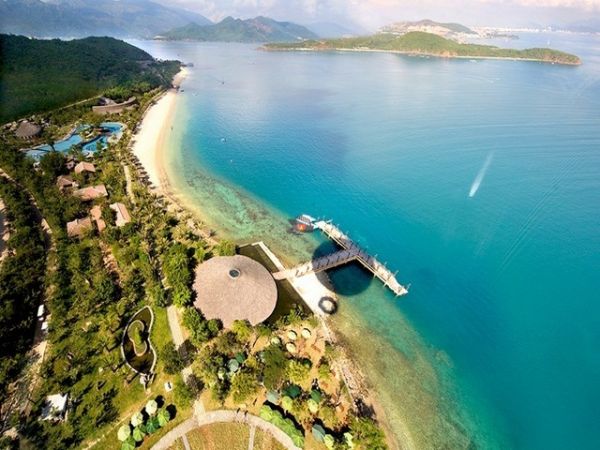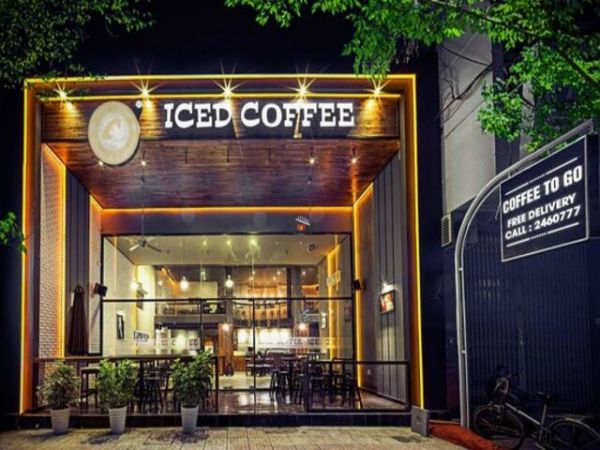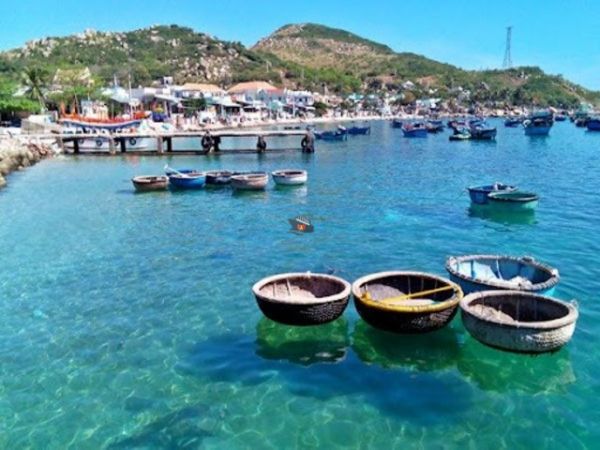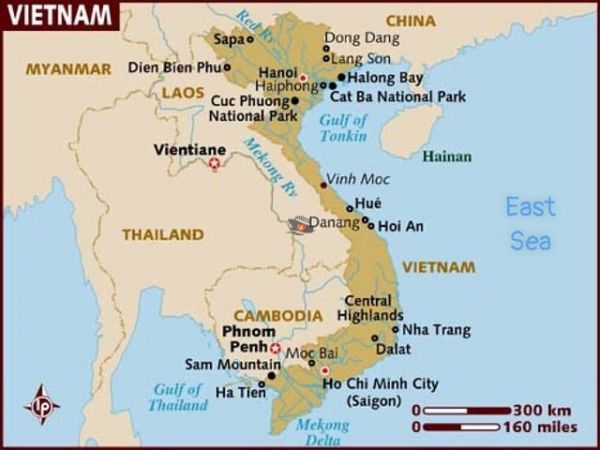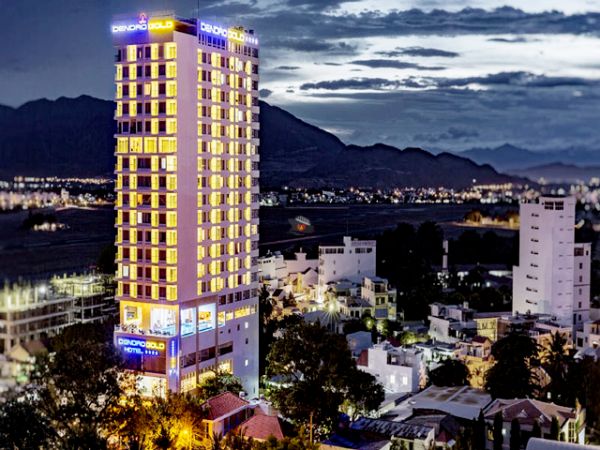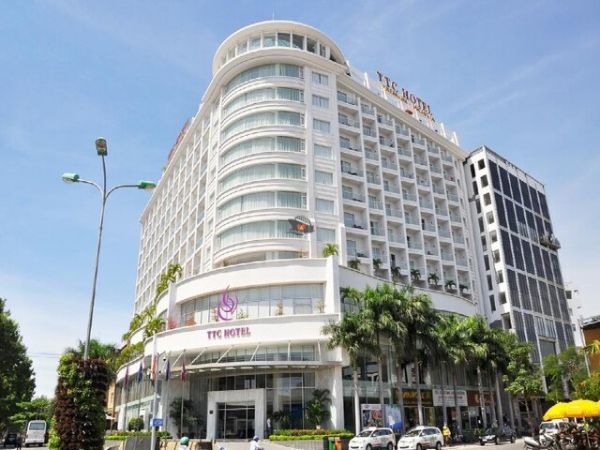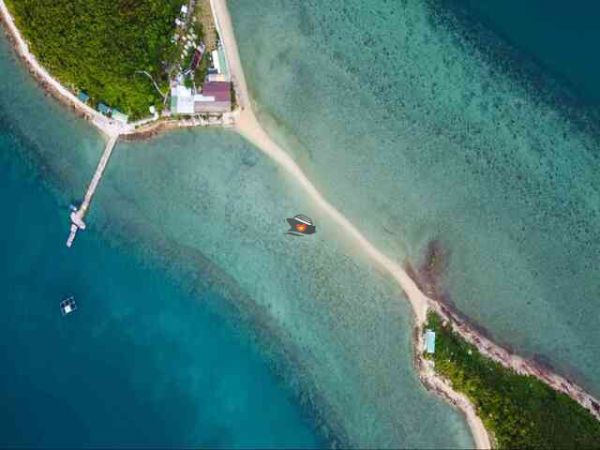VIETNAM CENTRAL HIGHLANDS TRAVEL GUIDE
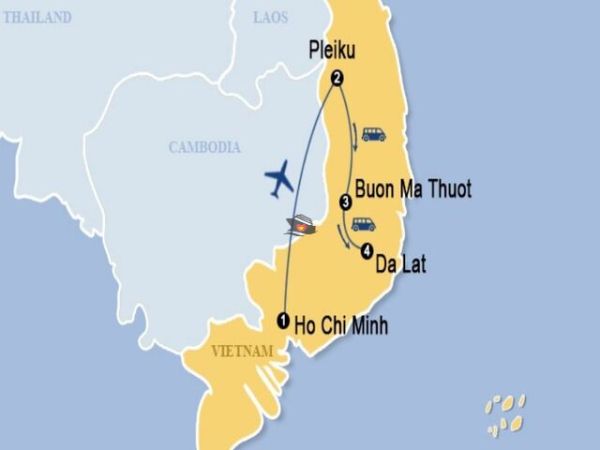
Vietnam Central Highlands Travel Guide. The rather enigmatic Central Highland region of Vietnam is sometimes overlooked on traditional tourist itineraries around the country. It is a place of mountains, primal woods, and small ethnic minority settlements that are clinging to their identity despite widespread colonization. The rough wildness of Vietnam's Central Highlands is ideal for visitors who want to explore the country's unspoiled beauty and remote towns.
Vietnam Central Highlands Travel Guide:
The Central Highlands include five provinces: Dak Lak, Dak Nong, Gia Lai, Kon Tum, and Lam Dong. The area is situated on a series of plateaus and borders Laos and Cambodia. For a long time, the territory remained mostly untouched, inhabited primarily by the Degar, who were given the name Montagnards by the French. The group consists of several ethnic minority populations, the biggest of which are the Jarai, Rade, Bahnar, Koho, and Mnong.
For the most part, the highlanders lived in peace, and it wasn't until the French demonstrated the agricultural usefulness of the region that things started to change. The steady colonization of the region by the Vietnamese people sparked objections from the original residents.

This, along with persistent conflicts between ethnic minority populations and the government, resulted in a restriction on tourist trips to the region in the early 2000s. Although the limitations have been abolished, certain sites still require police permits, tour guides, or more caution when traveling.
That being said, the Central Highlands provide an excellent opportunity to witness a part of Vietnam that has yet to be altered by tourism. People are drawn to the Central Highlands for more than just the opportunity to learn about the customs of these highland towns. The area is also known for its remarkable natural beauty, which includes several beautiful national parks. It also has several spectacular species of animals, including a limited number of elephants and tigers.
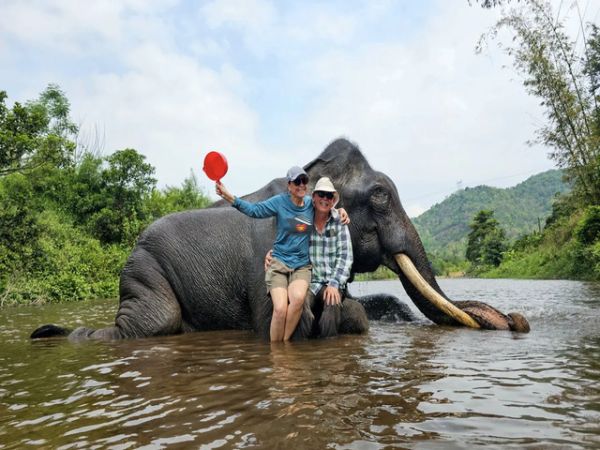
Because of their higher elevation, the Central Highlands have colder average temperatures than the coastal areas. Temperatures still reach the 30s from February to April. The dry season lasts from November to April, and the wet season from May to October. The greatest time to visit the central highlands is after the rainy season, when the countryside is at its greenest and temperatures begin to climb.
Most people opt to go across the main regions of the Central Highlands on an organized trip or on their own by motorcycle. Traveling on a motorcycle, whether alone or with a passenger, is an excellent way to soak in the breathtaking scenery along the road. The major cities, while generally uninteresting, provide a decent spot to stop and a starting point for further exploration of Dak Lak Province, and Lam Dong Province.
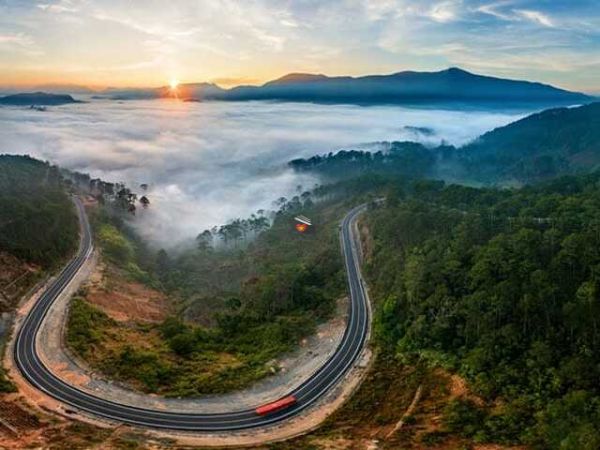
Places to Visit in Vietnam Central Highlands:
1. Buon Me Thuot City - Dak Lak Province:
The Ethnographic Museum in Buon Ma Thuot is an excellent starting point for exploring Vietnam's Central Highlands and its many fascinating cultures. The museum has excellent exhibits and descriptions of some of the cultural activities and festivities that occur in ethnic minority areas. The material can be particularly valuable because the inherent language barrier frequently prohibits in-depth explanations in the communities themselves. The many burial rites, such as tomb abandonment ceremonies, are particularly interesting.

Lak Lake is the ideal location for seeing the natural, untamed beauty of the region and discovering the historic settlements that line its borders. The vast expanse of water, the largest in the region, is nestled among the undulating wooded slopes. Small wooden boats are available for excursions around the lake, and most days, local people from Mnong village fish either on the lake or along the beach. Several communities around the lake's periphery welcome international guests. The Mnong community's traditional stilt dwellings are simple yet wonderfully made, and they provide insight into their culture and lifestyle.
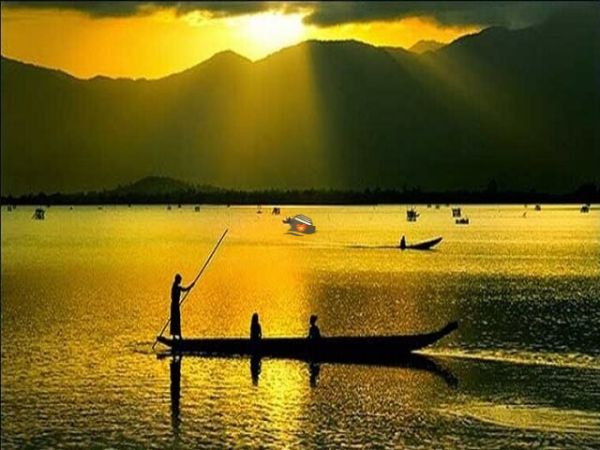
A gong dance performance can also be organized in these areas. The gong is a religious instrument thought to be associated with the gods; the older the gong, the greater the relationship. The value of the gong is widely held across the central highlands, and the ceremonies surrounding it have been designated by UNESCO as a Masterpiece of Oral or Intangible Heritage of Humanity.
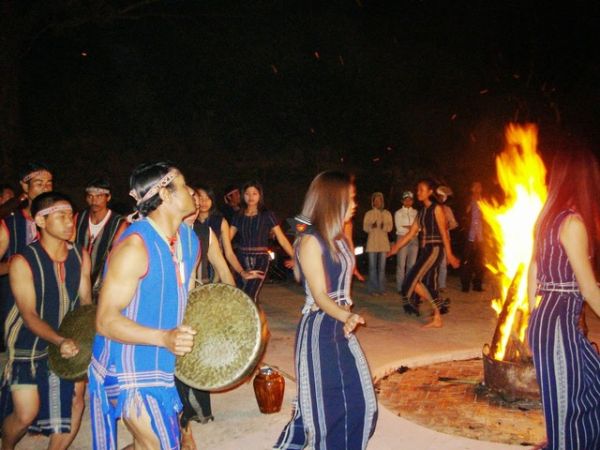
Dray Nur Waterfall, located around 25 kilometers from Buon Ma Thuot City in Dak Lak Province, is a must-see attraction in the Central Highlands. Follow National Road 14 to the province boundary of Dak Lak and Dak Nong, then continue for another 12 kilometers to Dray Nur Waterfall. This waterfall is created by the confluence of the Krong Ana and Krong No rivers, which form the famous Serepok River. With steep granite cliffs, the waterfall plunges from over 30 meters, creating a beautiful and romantic picture.
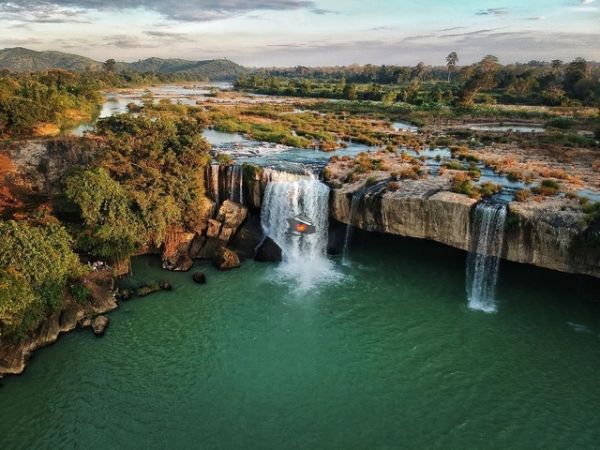
Ako Dhong, an Ede Village located just a few kilometers outside of Buon Ma Thuot, offers tourists the opportunity to learn more about traditional village life. The town is prosperous due to its coffee production, and while there are some contemporary homes, there are also many lovely old wooden stilt longhouses. The wooden structure of the buildings, as well as the gardens that surround them, blend in with the lush, green surroundings. In addition to maintaining the ancient type of dwelling, the villagers attempt to preserve other traditions such as the manufacture of ruou can wine and the weaving of magnificent brocades.
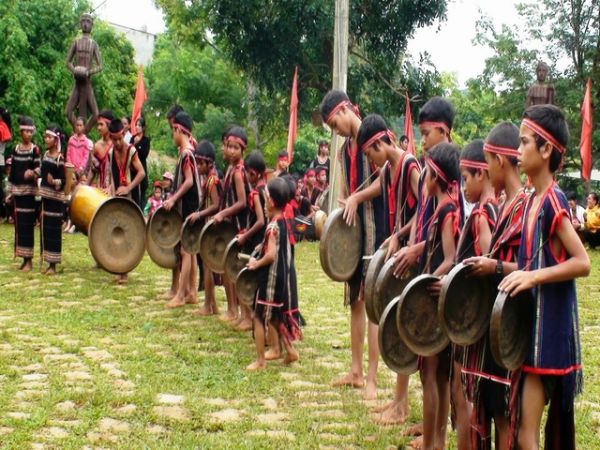
Yok Don National Park is easily accessible from Buon Ma Thuot. The park has a massive 115,000 hectares of protected woodland that seems untamed, fascinating, and thriving with species. There is a tourist center in the park where local guides, who must be accompanied by guests, wait to show them around. They not only provide protection, but they can also share professional information and help you find some of the numerous types of animals lurking in the woods. The park is home to various rare and endangered species, including tigers, elephants, and leopards, however encountering any of these creatures is extremely unusual owing to overhunting.
However, many more animals are more likely to arrive, such as wild monkeys and hundreds of colorful bird species. Accommodation is offered in the park for people who choose to take their time and explore nature over many days. The organized trips vary in length and ability, and some include a night safari to increase the chances of seeing animals. There are also four ethnic minority communities in the park, three of which may be visited with a guide. Other activities in the park include taking a boat trip, hiking to the Buddha Cascade, or simply resting in a hammock and soaking in the views and sounds of the outdoors.

Cat Tien Natural Park is 260 km southwest of Buon Ma Thuot. Among the tropical rainforests and bamboo woods are crystal streams and swamplands, some of which swell and flood during the rainy season. This big and extensive national park is ideal for hiking or cycling and may be visited as a day trip or over many days.
UNESCO designated the region as a biosphere reserve zone, one of six in Vietnam, to safeguard the park's outstanding biodiversity and vegetation. With the guidance of skilled guides, visitors may witness over 100 different varieties of mammals in the park. Some of the 350 distinct bird species and 400 different butterfly species are easier to identify. In addition to the numerous unique species that walk freely throughout the forest, visitors may observe a variety of creatures up close in the park's two sanctuaries.
The first is the Endangered Primate Species Centre, which houses gibbons and langurs among other animals to release them into the wild, and the second is the Cat Tien Bear Rescue Shelter. The park contains several distinct hiking trails, the majority of which should be completed with the assistance of a guide. Trekking to Crocodile Lake is a popular alternative, as is an early morning trip to observe Gibbon families perched in the trees.
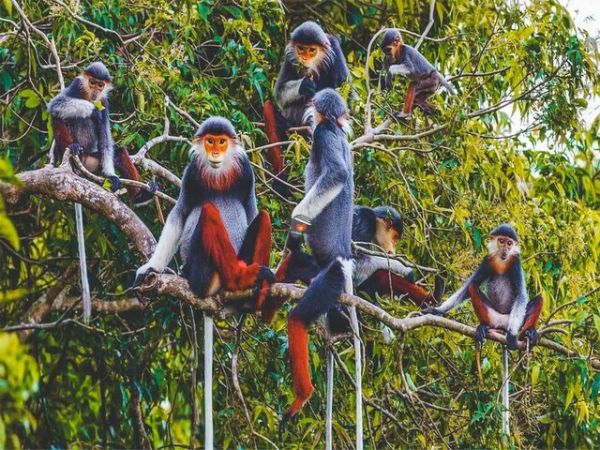
Kon Tum, like Buon Ma Thuot, saw massive destruction during the America-Vietnam War. Now, however, the atmosphere is serene and friendly, and the town serves as an excellent base for touring the various ethnic minority communities that surround it. The town itself has various unique features, such as a collection of Christian structures. The Montagnard Church's architecture is particularly intriguing since it incorporates elements of French colonial style while being entirely constructed of wood.
Outside of the tranquil town, a variety of ethnic minorities live in traditional villages, most of which are friendly to visitors, though it is nevertheless suggested that you travel with a guide. There are eight separate minority groups in the area, each with its own distinct culture. There are several commonalities between the settlements. While traveling through the villages, the significance of the communal dwellings known as rong becomes clear. These raised wooden buildings, with remarkably tall thatched wooden roofs, are utilized for ceremonial and communal functions.
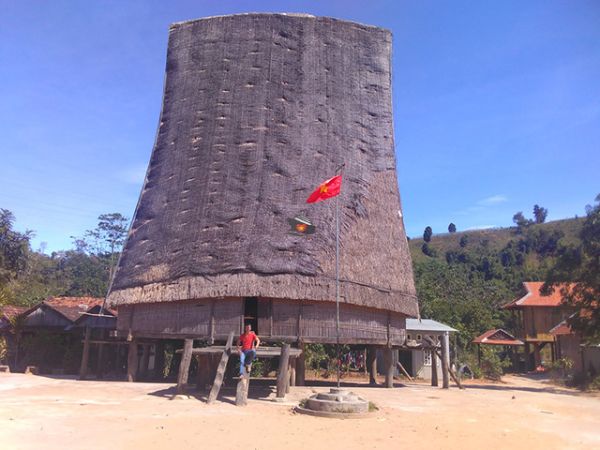
Funeral ceremonies are another intriguing feature of Indigenous life to observe in the magnificent graveyards. It's also worth noting that many of the settlements have a Catholic church, thanks to the impact of missionaries who were exiled in the region. Musical instruments, particularly gongs, play an important role in the culture. Those who travel at the correct moment will be fortunate enough to see a religious performance. When traveling around the villages, especially with a local guide, it is not unusual to be asked into houses or gatherings where the locals' warm and kind demeanor is evident. Drinking ruou can, a strong sticky rice wine, from a communal pot with bamboo straws is a typical way to socialize.
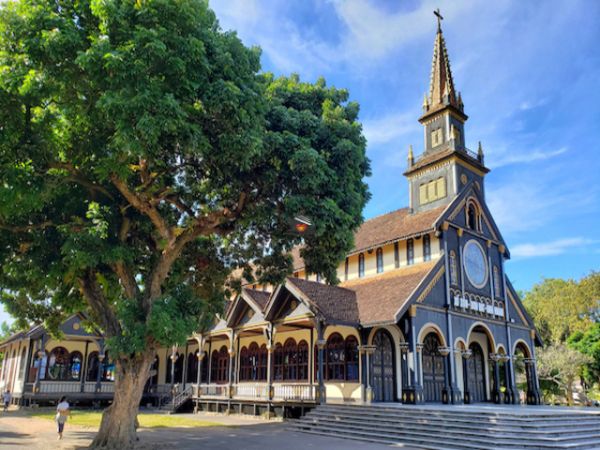
Nestled in the bright and breezy sceneries of Kon Tum, Mang Den's rich environment and refreshing ambiance exude a clean and rustic attractiveness.
Mang Den is located in the Kon Plong District Plateur, some 60 kilometers from Kon Tum City, the headquarters of the namesake remote Central Highlands region. Mang Den is sometimes referred to be a miniature Da Lat because of its ancient woods, lakes, waterfalls, pine forests, and cold climate.
Mang Den is popular throughout the winter months, which normally run from October to December. This time of year, Kon Tum is noted for its cool, bright weather and dry circumstances. New Year's Day brings the flowering of mai anh dao (prunus cesacoides), or cherry-like apricot blooms.
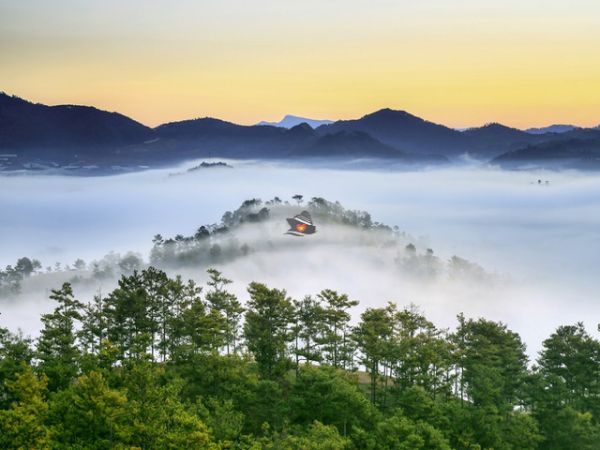
Pleiku, like the rest of Vietnam's Central Highlands, suffered greatly during the end of the America-Vietnam War. Its key position served as a base for South Vietnamese and American soldiers until 1975 when it was captured by North Vietnamese forces. The setback put many local indigenous people in jeopardy, with numerous fatalities. The town was destroyed and has subsequently been rebuilt in a largely contemporary, uninteresting manner.
Pleiku also had increased instability in the early 2000s, when anti-government rallies took place in the city, resulting in limits on tourist travel in the area. Because of these limitations, certain places continue to need a permit or a tour guide. Although it may need some planning, a tour through the unspoiled countryside and historic towns is well worth the effort. Few locations in Vietnam remain as pristine and wild as the landscape in this region. There is enough rural beauty and preserved culture just outside of the major town to discover. The geological nature of the region has resulted in several stunning natural wonders. The vast, hilly surroundings are the consequence of volcanic activity from up to 30 million years ago.

Bien Ho, a large lake in a dormant volcano crater that developed millions of years ago, is one such example. The allure of this pine-covered lake is its raw, rough beauty, unspoiled by contemporary advancements. The lake's splendor is shown early in the morning behind the rolling clouds, giving way to the noon sun and fresh mountain air. The smooth, crystalline water changes color throughout the day, following the sky's transition from bright blue to golden as the sun sets. The lake is not only a great location to relax and enjoy nature, but it also provides food for many of the ethnic minority populations who live near it. Local villagers are frequently seen fishing in the lake, sometimes competing with kingfishers who swoop down in search of a lucky catch.
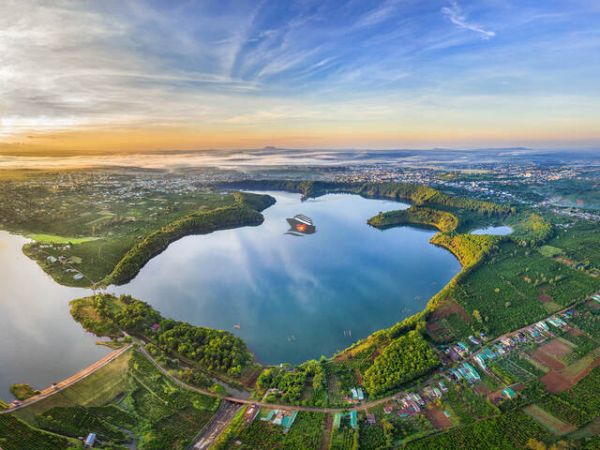
Phu Cuong Waterfall is another region that has managed to preserve its natural beauty. This roaring cascade is located in the heart of the countryside, surrounded solely by lush green flora and massive, polished stones. It is best visited shortly after the rainy season, when the flow of water is at its peak, although it may also be reached safely. The water that cascades over the rocks and into the pool below produces a delightful mist that rises and fills the air. When the sun shines brightly in the sky, its light disperses throughout the autumn, producing a delicate rainbow that adds charm to the already stunning countryside.
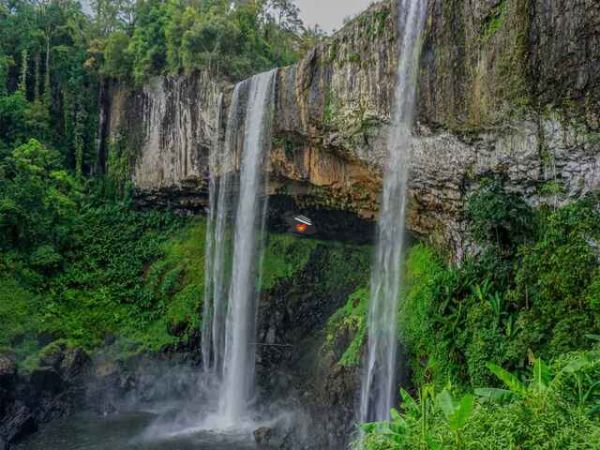
Pleiku also has some intriguing architecture in its religious structures. Minh Thanh Temple, located south of the main city, is a relatively modern temple designed in the Taiwanese style. The temple itself is stunningly beautiful; the red and gold nine-tiered pagoda glows in the noon light. The grounds around the temple are as beautiful, with bonsai, lotus pools, and religious monuments. In addition to the peaceful atmosphere and lovely gardens, the temple contains some intriguing artwork depicting the gruesome destiny of people sentenced to hell.
The Plei Chuet Montagnard Church is another religious structure, this time Catholic, with a unique architecture. This church was built in the region's traditional rong house architecture. Although the church retains much of the symbolism associated with Catholicism, it has been modified to better reflect the indigenous community's style.

Pleiku also has several ethnic minority enclaves dispersed around the countryside. These, however, may be more difficult to visit due to local travel limitations and should be organized with a guide. Visiting the several communities demonstrates how cultures and traditions vary even within the same area. The burial traditions of many civilizations, which may be seen in the eye-catching graveyards, are particularly interesting. The graveyard in Plei Phun, a Jarai village, has miniature house-like constructions near each grave, embellished with wooden carvings of the deceased. It is also an excellent chance to discover the welcoming spirit of local communities and learn more about their way of life.
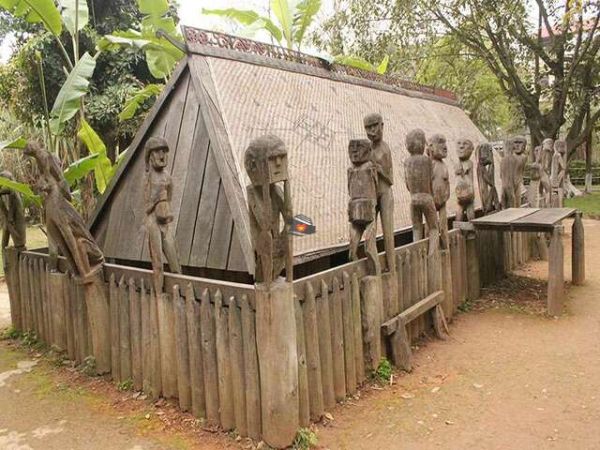
Ruou can is one of the most well-known characteristics of Central Highlands cuisine since it is both a popular drink and an integral part of the culture. Glutinous rice wine is fermented in big earthenware jugs using a variety of herbs depending on the locality. After about a month, the combination is ready to be consumed directly from the jug. Many individuals will drink from the same jug, using long, thin bamboo straws. Ruou cans are a must-have at any major community event or when receiving guests, since the act of sharing fosters a kinship.

There are no limitations to visiting the perennially popular Da Lat. The charming capital of Lam Dong province, at 1,500 meters above sea level on the Lang Biang plateau, has earned the nickname "city of eternal spring". Da Lat began as a famous holiday destination for French colonialists lured to the city's high altitude and moderate temperature; now, it is Vietnam's wedding and honeymoon capital. Remnants of bourgeois French colonial architecture may still be found today, and a magnificent motorbike ride will take you to waterfalls and farther into the countryside. Backpackers are also drawn to the rock-bottom costs of cheap accommodations.
Despite having airports and decent road access from the coast, the majority of the Central Highlands sees little visitors. The government has been concerned about Westerners visiting the region since uprisings over Indigenous land rights and autonomy occurred in the early 2000s, which the authorities rapidly crushed.
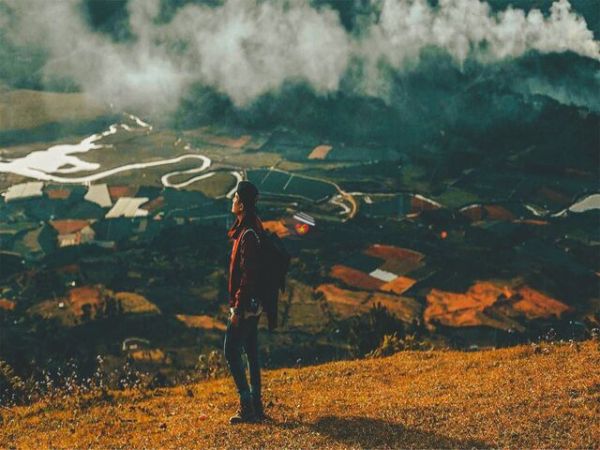
The Montagnards, a word adopted by French colonists to denote "mountain people," are the Central Highlands' original ethnic subgroups. Tensions between the Montagnards and the authorities date back before the war. Already on shaky ground, the Vietnam War erupted, and the Montagnards found themselves stuck between the North and the South before being recruited by American Special Forces. They were affectionately known as the Yards and were revered for their fighting abilities, courage, and devotion. When the United States withdrew ground forces in 1972 and 1973, their position deteriorated, and the majority of their villages were destroyed or captured, forcing them to become refugees.

The Linh Phuoc Pagoda, also known as the Glass Pagoda, is known for setting national records, including the largest bell in Vietnam, the longest glass dragon (49 meters), the tallest Quan Am Bodhisattva statue, and so on. It's true that this pagoda accomplishes things larger and more beautiful than numerous others, and you can't ignore it as you enter the lane that leads to the entrance. The most striking aspect is the shattered crockery and glass that covers the entirety of the temple. While this is common in Vietnam's pagodas, few religious monuments achieve this degree of careful detail and grandiosity. A single pillar, part of the wall, or figure is a work of exact art in its own right.

The actual name is Hang Nga Guesthouse and Gallery, but the locals call it the Crazy House. And standing in front of its entryway, it's clear why: this mansion is weird. It defies all architectural conventions, with surprising twists and turns, roofs, and chambers. It resembles a fairy tale castle, with giant "animals" such as a giraffe and a spider, no rectangular or round windows, and may be visited in the same way as museums are. Someone has created a weird mansion in the highlands of Vietnam. Hang Nga, an architect, designed the Crazy House.

Bao Dai's summer palace is about two kilometers from the city center, located at a wonderful viewpoint in a forested region that used to be ideal hunting grounds, which was one of Bao Dai's favorite activities.
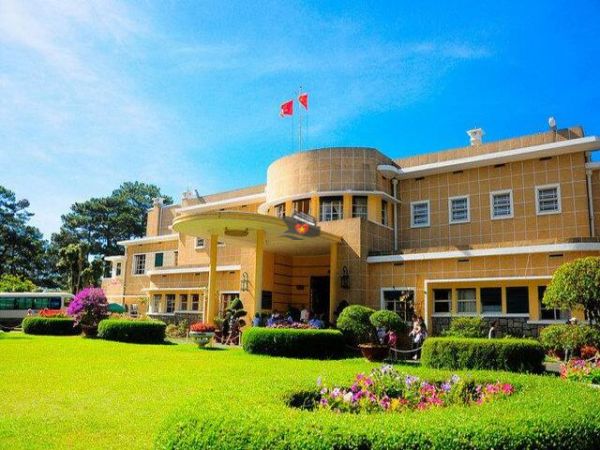
Dak Nong, located at the southwest gateway to the Central Highlands on the M'Nong Plateau, has two border crossings with Cambodia: Dak Peur in Dak Mil District and Bup'rang in Tuy Duc District. Gia Nghia City is Dak Nong Province's core center, around 180 kilometers west of the tourist resort of Da Lat and 250 kilometers from Ho Chi Minh City.
The most delightful time to visit Dak Nong is in the spring, beginning in January, when the rainy season ends, leaving behind bright skies and many waterfalls. From March to early April, the landscape is alive with brilliant coffee flower blossoms, followed by cassia fistula flowers in May and June. Summer rains in Dak Nong are generally short.
Ta Dung National Park is located in Dak Som Commune, approximately 45 kilometers southeast of Gia Nghia City on Highway 28. Ta Dung Lake, an immense body of water generated by hydroelectric dam activities, is located in the middle of the park and covers over 22,000 hectares. It is embellished with over 40 big and small islands and peninsulas.
Visitors to Ta Dung may take boat rides, enjoy the island vistas that emerge from the lake's length, breathe pure air, and immerse themselves in the undisturbed countryside. Furthermore, this location has breathtaking granite waterfalls and is home to a variety of unique and unusual flora and fauna species.
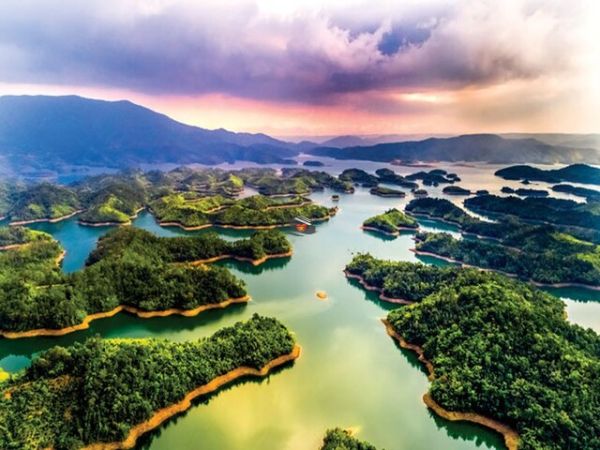
The volcanic cave system in Dak Nong was discovered in 2017 and comprises over 50 caverns with a total length of almost 10,000 meters, making it one of Southeast Asia's longest volcanic cave systems and part of the UNESCO Dak Nong Global Geopark.
These caverns, which date back over 140 million years, still contain remnants of unique archeological remains from the prehistoric period, providing insights into the living habits and locations of humans who lived in this region around 6,000 to 7,000 years ago.

The Nam Kar volcanic range is made up of three separate volcanoes: one major cinder cone and two subsidiary cinder cones. The central cinder cone is 60 meters tall and 220 meters wide, with an oval-shaped crater about 20 meters deep from its peak. This volcanic cone rises 660 meters above sea level and is made mostly of slag, with each slag particle measuring several millimeters in diameter.
The creation of the Nam Kar volcano has sparked legends among the M'Nong people who live in this area. These stories convey a message intended to educate and remind future generations not to destroy the region's natural resources.

Dak Nong has two border crossings with Cambodia: Dak Peur in Dak Mil District and Bup'rang in Tuy Duc District, which spans 140 kilometers. When traveling along this route, you will see twisting terrain surrounded by magnificent pine trees on both sides.
This route is great for caravan vacations or camping adventures, as it allows you to experience the region's unique nature while also immersing yourself in the rich local community culture. Throughout your tour, you will see several waterfalls, some spectacular and others more calm, as well as rock formations. In addition, tourists will see various border signs identifying the Vietnam-Cambodia line.
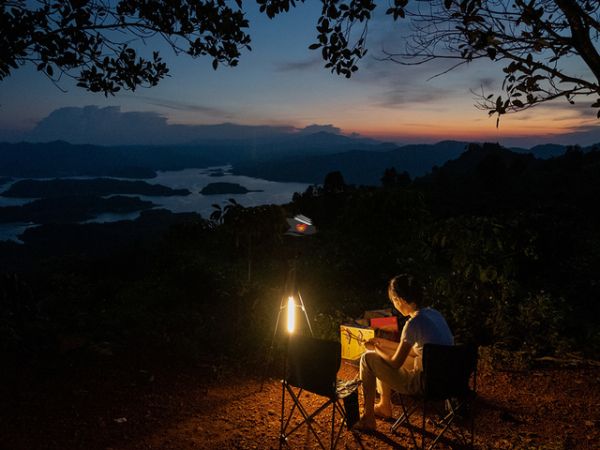
Festivals in Vietnam Central Highlands:
The Central Highlands' gong tradition has been included in UNESCO's list of Intangible Cultural Heritages of Humanity. Gongs are used extensively throughout the region to link people with their gods. It is popularly believed that each gong is associated with a god, that each gong has a particular worth, and that as the gong matures, its strength increases. Rather than being a hallmark of a single festival, gongs are a common sight at all festivals and traditional events, with each location having its distinct flair.
Because of the region's many ethnic minority cultures, there are hundreds of traditional festivals held throughout the year. Many of the cultures practice animism, which includes appealing to the gods or spirits for health and wealth.
The Village Land Praying Festival, a Ba Na event, occurs in Gia Lai and Kon Tum during the second and third lunar months. This ceremony takes place to pray for a good new year.
The Mnong also have a celebration to pray for wealth called the Com Moi celebration, which takes place at the beginning of August. Offerings of food and tools are offered to thank the gods and ask for favorable conditions. This is followed by a feast and the consumption of Ruou Can wine.
The Elephant Racing Festival is unique to the region and stems from a local custom of domesticating wild elephants. Don Village has a Mnong festival during the third lunar month. People feed their strongest and fastest elephants a lavish meal in preparation for the festival, hoping to increase their chances of winning. The sounds of the tu va, a traditional horn, announce the start of the race. People dressed in their finest traditional attire gather to see the gorgeous beasts gallop around the track. The victorious elephants are awarded with various delicacies and accolades. The cheerful spirit of the event continues into the night with dining, dancing, and drinking ruou can wine, all accompanied by the sound of the sacred gong.
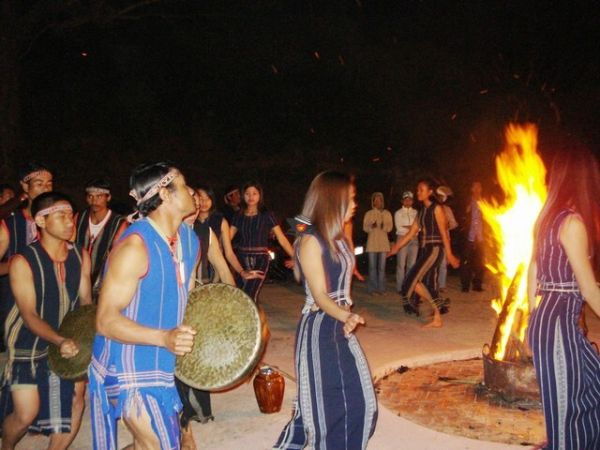
Vietnam Central Highlands Climate:
Vietnam's Central Highlands offer a stark contrast to the tropical south, with their dry temperature, undulating hills, and blue skies. The chilly season in the Highlands lasts from November to January, with temperatures averaging between 12 and 15 degrees Celsius. In February, March, and April, the mercury rises into the 30s. The rains begin in late April or early May, and temperatures begin to decrease slightly, with the monsoon season concluding in October. July and August are the rainiest months.
The temperature in the Highlands is colder all year due to its elevation compared to Vietnam's coast. Even during the summer season, mornings and evenings can be cool, and late nights can be quite cold. If you want to go by motorcycle, take these circumstances in mind while packing, since the morning chills will easily cut through a T-shirt at 60km/h. The greatest time to visit the Highlands is between November and January when the terrain is lush, the rain is low, and the weather is pleasant.
During the warm, dry months of February through April, the terrain can become parched and unpleasant to travel in. By April, dust and haze are serious concerns, as are bushfires (both deliberate and natural). The rivers are low, and the countryside is less picturesque than the rest of the year.
Throughout the rainy season, severe rainfall can produce flash floods. The dust turns to mud, and travel, particularly on local roads, slows dramatically. During July and early August, the rain might appear to be virtually continuous. If the rain and mud do not dissuade you, this is the best time of year to view the countryside at its most lush.

Hotline/ WhatsApp: +847-6666-0606
Email: info@friendlytravel.vn


